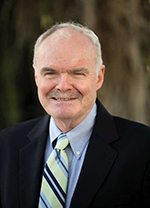Remembering the Charge
 |
| Robert E. Lee |
It was a beautiful day on the battlefield. We were standing near the famous copse of trees that was the Confederate objective on Cemetery Ridge, the site of the legendary Pickett’s Charge. The grandsons asked if they were the same trees as in the battle. Interesting question. If so, they must be well leaded. A father from Scranton was with his boys and he said, “I have a million questions about this battle.”
“We could probably answer five-hundred-thousand of them,” an eavesdropper said.
“I know nothing about the battle,” the father said, looking over the expanse of flat, mostly uphill land a mile wide toward Seminary Ridge, “but I wonder why they ever made that charge across open fields.”
“People have been wondering that for 150 years,” he was told. It was just a coincidence that we visited Gettysburg just a few weeks before the 150th anniversary of the greatest killing field on American soil, but it was no coincidence that a man viewing the battlefield for the first time wondered why so great a general as Robert E. Lee sent 12,500 of his best troops on an attack that even his top lieutenant thought was doomed to fail.
Lee, largely silent on the subject, said only that he thought his men could do anything and added that, for reasons unknown, his plan of coordinated attacks from three different directions was not carried out. He also said he could have used Stonewall Jackson, who had been killed at Chancellorsville a month before.
The great general was hardly alone in attacking a formidable Civil War position. Union Gen. Ambrose Burnside at Fredericksburg sent the Irish Brigade to slaughter in a hopeless uphill attack. And Gen. John Bell Hood destroyed the better part of a Confederate army in similar fashion at the Battle of Franklin in Tennessee.
But it is Gettysburg that continues to fascinate and draw the crowds. For the big anniversary next week there will be almost as many people wandering around Gettysburg wearing Civil War uniforms as took part in the original fight. And some of them, like the fellow from Scranton, will ask some strange questions. Columnist George Will overheard people saying that it was interesting that so many of these great battles took place in national parks, and observing that the battle could not have been that bad – there are no bullet holes on the monuments.
Gettysburg has too many monuments; some of them look like churches. Compare it to Manassas (Bull Run) right outside Washington. The first big battlefield of the war has little statuary. Or Five Forks near Petersburg, Virginia, the last big engagement. Many of the 9,500 Confederates were captured, greatly weakening the already worn-down Southern army, and forcing Lee to abandon his position and begin the retreat that led to Appomattox. That battlefield has hardly changed over a century and a half, but it is barley recognizable as such. It was not even on the historic registry until 1960. Five country roads still intersect, but there is a lone cannon and a marker to remember the battle. You could pass it without notice.
Add new comment
